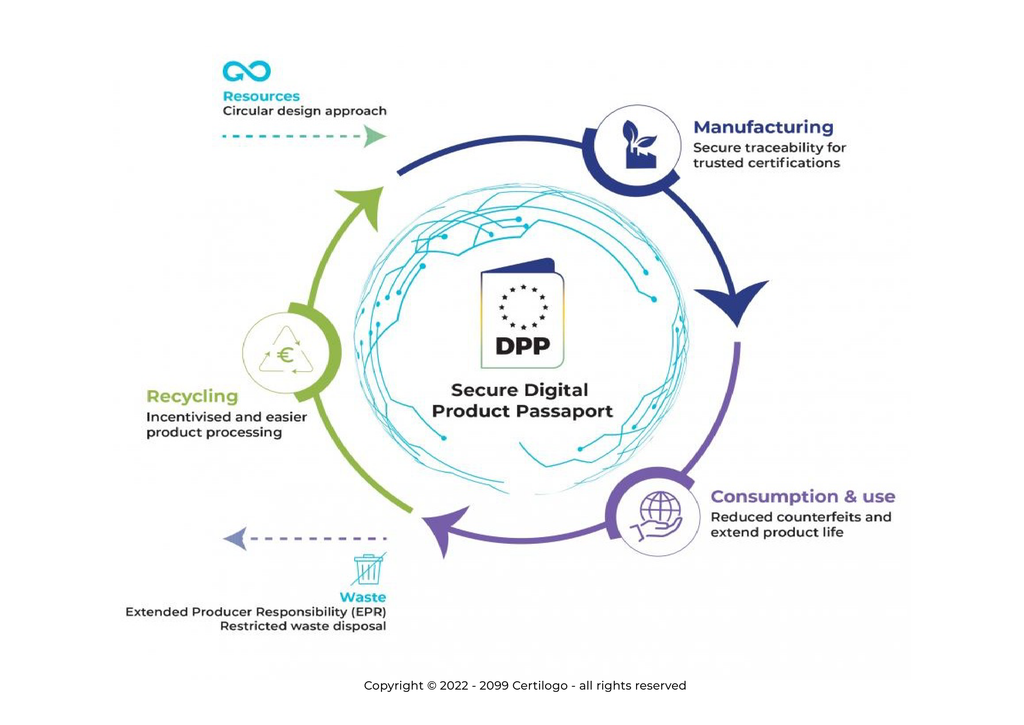What is the Digital Product Passport?
In the context of the European Green Deal, the digital product passport could revolutionise fashion by providing an unprecedented level of transparency
In March 2022, the European Union unveiled the EU Strategy for the Sustainability and Circularity of the Textile Sector, which introduced a mandatory digital product passport (DPP) for all textile products sold in the Eu by 2030.
The introduction of this passport has the potential to revolutionise how consumers shop for fashion and textiles by providing them with real-time access to the origins of what they are buying. They can check whether a particular item was produced using sustainable practices, or if certain toxic chemicals were used in its manufacture. Consumers will thus be able to make more informed buying decisions based on their own personal values and preferences.
But the digital product passport could also provide greater transparency throughout the supply chain, enabling companies to track products from the source to the shelf. This could help reduce product waste and improve overall efficiency in the textile sector. It could also lead to a greater focus on sustainability, as companies are held accountable for their practices.
Also, the DPP is definitely a resource for fighting counterfeiting. As a secure identifier, it will ensure that customers are buying authentic items, and this is particularly useful in case of second-hand ones.
Lastly, by having a digital passport that is consistent across all countries within the EU, it will be easier for companies to do business with each other and share information digitally, allowing them to better understand each other’s processes. This could help foster collaboration between companies and create an environment where sustainable business practices are encouraged.
But in practice, what is a digital product passport?
What is a digital product passport?
The digital product passport is a secure, unique identity that links information about the entire life cycle of any textile product to its physical origin. This will include data such as raw materials, water use and energy consumption, manufacturing processes, production factories, transport details, sustainability certifications and other relevant environmental impacts. It could also contain additional data fields with consumer-facing information such as care tips or colour accuracy details. This data is stored securely and can only be accessed by authorised users, ensuring that consumers have access to accurate and reliable information about the items they are buying.
Consumers will access the digital product passport by scanning a digital marker attached to the product, or by searching for it online via its unique identifier. The passport will then be stored on a secure digital platform in order to ensure data integrity and privacy.
The European Commission is currently working on creating an EU-wide data platform - based on blockchain technology - to store information relevant to these digital passports.
Once the customer has scanned or searched for the item’s digital passport, they will be able to access all the detailed information about it.

Digital product passport and connected products
Fashion brands do not have to wait for EU moves and can adopt DPP right away. The best way to do this is for their products to become "connected." Connected products are those that have built-in systems that collect data in real-time and then transfer it to a secure platform either on the cloud or via blockchain. This data can be accessed by customers anywhere in the world. In this way, companies can provide their customers with up-to-date information about their products.
A good way of achieving this is by making use of QR codes, or Near Field Communication (NFC), which can be complemented by radio-frequency identification (RFID) tags. These tags can be attached to each item when it is manufactured and will enable companies to track and share all relevant information about the items throughout their life cycles.
As you can see, connected products inherently integrate the digital product passport. But they have additional functions. While DPP is only to provide transparency to consumers, connected products allow brands to have an exchange and create a relationship with people. For example, brands can send customers personalised discounts and promotions, collect feedback, ask for reviews or surveys, send loyalty rewards, invite people to interact on social networks, and much more.
Furthermore, connected products allow brands to further customise their products and service according to customer preferences by using customers' data to find trends. This is a great way for fashion brands to respond quickly to changing consumer tastes.
The future is already here
Digital product passports are quickly becoming a must-have for fashion brands, and with EU moves to create a data platform soon, many companies will be looking to adopt this technology to stay ahead of the competition.
As we have seen, by leveraging connected technologies and creating digital product passports, fashion companies can give their customers a better overall customer experience, while promoting sustainability and transparency, and also gaining a competitive advantage.






















